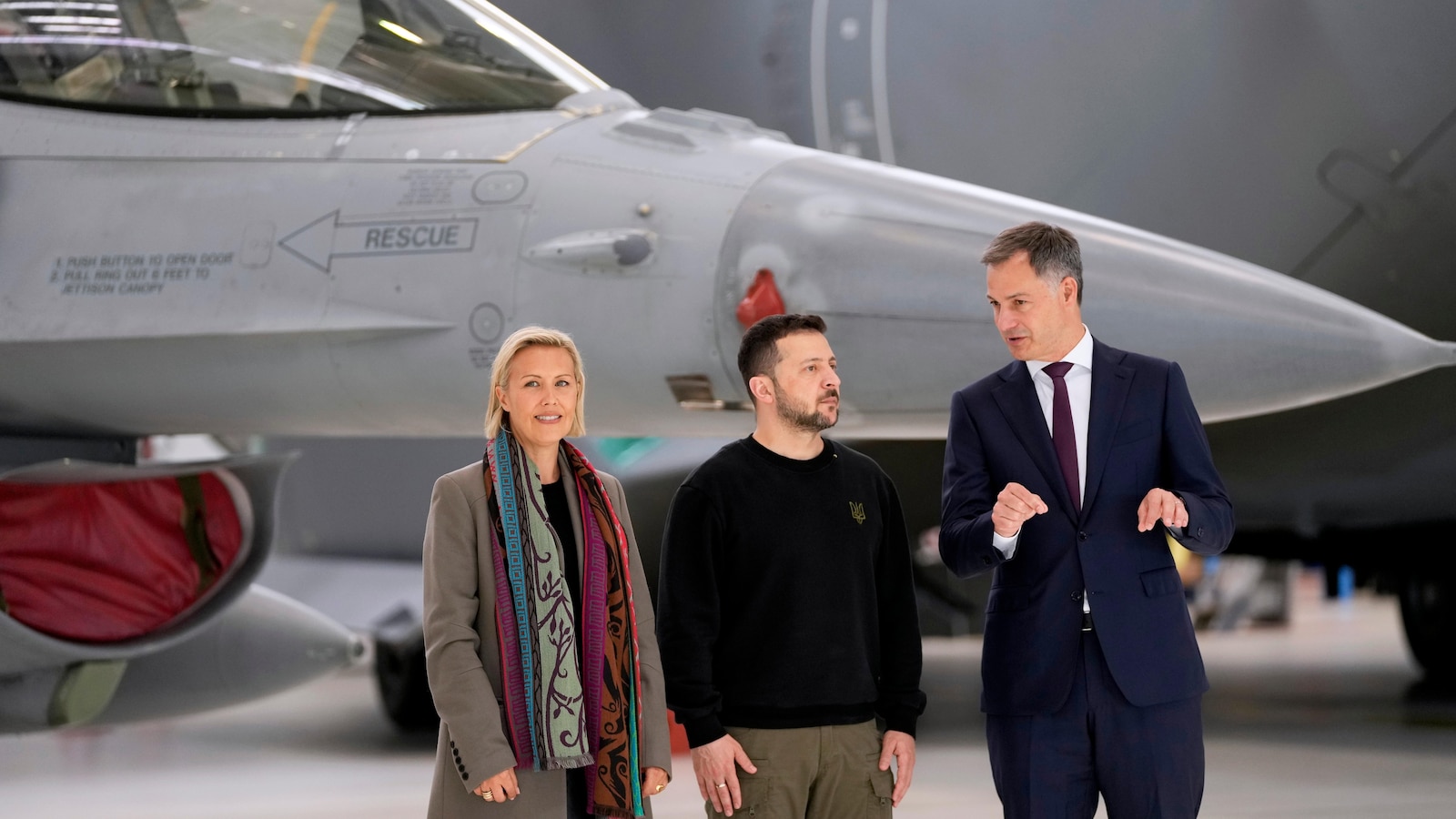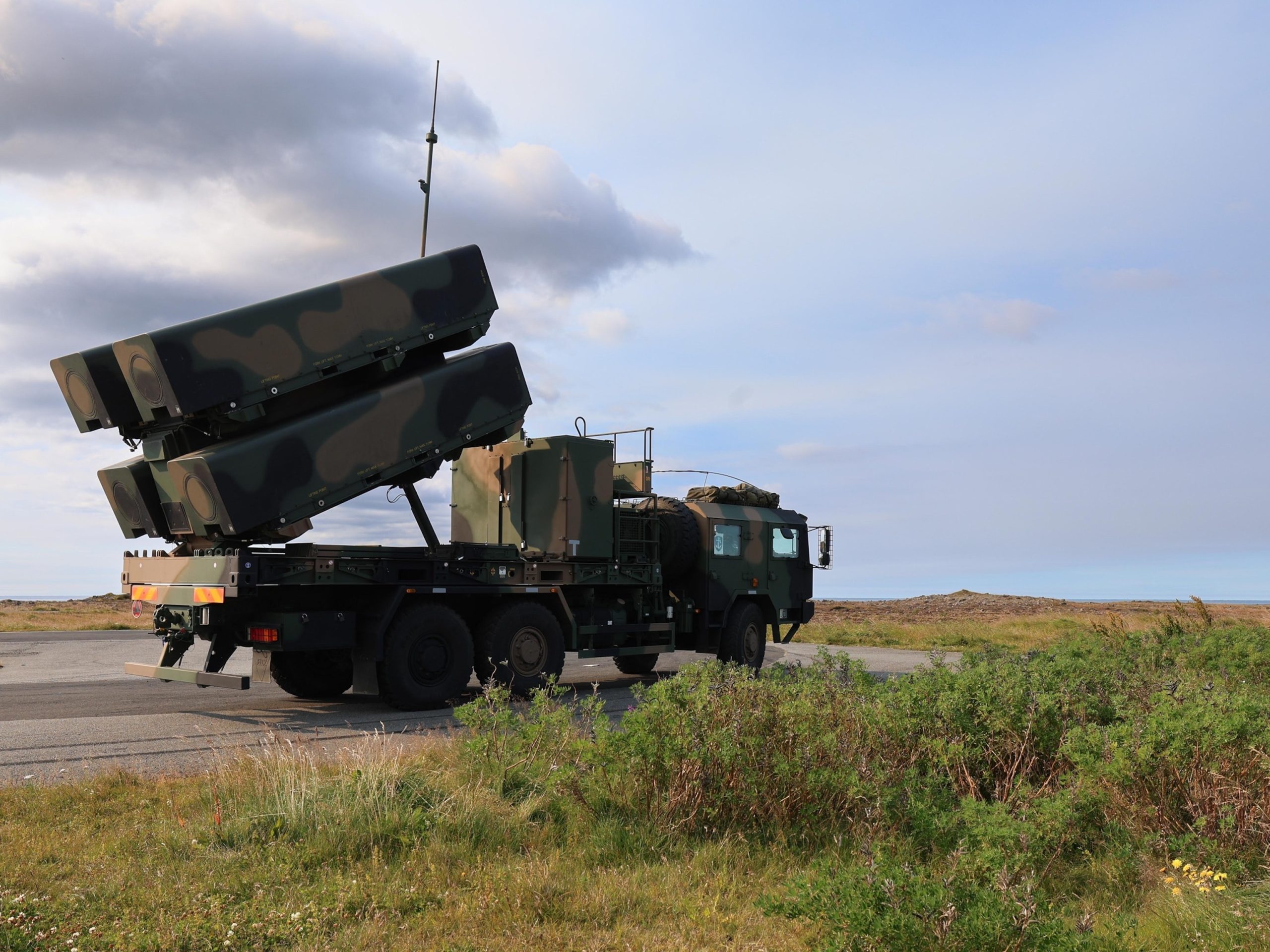
KYIV, Ukraine — Ukraine may keep some of the F-16 fighter jets it’s set to receive from its Western allies at foreign bases to protect them from Russian strikes, a senior Ukrainian military officer said Monday.
Belgium, Denmark, the Netherlands and Norway have committed to providing Ukraine with over 60 U.S.-made F-16 fighter jets to help it fend off Russian attacks. Ukrainian pilots are currently undergoing training to fly the warplanes ahead of the deliveries expected to start later this year.
Serhii Holubtsov, head of aviation within Ukraine’s air force, said that “a certain number of aircraft will be stored at secure air bases outside of Ukraine so that they are not targeted here.”
Holubtsov told the U.S. government-funded Radio Free Europe/Radio Liberty that those F-16s could be used to replace damaged aircraft as they undergo repairs as well as for training Ukrainian pilots abroad.
“This way, we can always have a certain number of aircraft in the operational fleet that corresponds to the number of pilots we have,” he said. “If there are more pilots, there will be more aircraft in Ukraine.”
Russian President Vladimir Putin has warned that Moscow could consider launching strikes at facilities in NATO countries if they host the warplanes used in Ukraine.
“If they are stationed at air bases outside the Ukrainian borders and used in combat, we will have to see how and where to strike the assets used in combat against us,” Putin said last year. “It poses a serious danger of NATO being further drawn into the conflict.”
In March, the Russian leader again warned Ukraine’s Western allies against providing air bases from where the F-16s could launch sorties against the Kremlin’s forces. Those bases would become a “legitimate target,” he said.
“F-16s are capable of carrying nuclear weapons, and we will also need to take that into account while organizing our combat operations,” Putin stated.
The F-16s require a high standard of runways and reinforced hangars to protect them from attacks on the ground. It’s not clear how many Ukrainian air bases can meet those requirements, and Russia would be certain to quickly target a few that could accommodate them once the jets arrive.
Holubtsov noted that the F-16s will help protect front-line and border regions from Russian glide bombs that have inflicted significant damage to both troops and residential areas, including Kharkiv. Glide bombs are heavy Soviet-era bombs fitted with precision guidance systems and launched from aircraft flying out of range of air defenses.
“I think we will succeed, first of all, in pushing back the aircraft that drop glide bombs farther from the contact line,” he said. “If we manage to push them back at least another 30-50 kilometers (19-31 miles), this can already be considered a turning point and an achievement, if not of superiority, then of parity in the airspace.”
Ukraine’s Western allies are trying to bolster military support for Kyiv as Russian troops have launched attacks along the more than 1,000-kilometer (620-mile) frontline, taking advantage of a lengthy delay in U.S. military aid. Ukraine is currently fighting to hold back a Russian push near its second-largest city of Kharkiv, less than 30 kilometers (less than 20 miles) from the border.
Russian troops have also continued their slow offensive in the eastern Donetsk region. On Monday, the Russian Defense Ministry claimed that the Kremlin’s forces had captured the village of Staromaiorske, the claim that hasn’t been confirmed by Kyiv and couldn’t be independently verified.
Ukraine has struck back with regular missile and drone attacks on Moscow-occupied territories and areas inside Russia.
In the latest strike, Ukrainian forces hit Russian air defense systems in Dzhankoy, Chornomorske and Yevpatoriya in the Moscow-occupied Crimea with missiles, Ukraine’s General Staff said Monday. The Russian Defense Ministry hasn’t commented on the Ukrainian claim, which couldn’t be independently confirmed.
The U.S. and other NATO allies have responded to the latest Russian offensive by allowing Ukraine to use weapons they deliver to Kyiv to carry out limited attacks inside Russia. The decision could potentially impede Moscow’s ability to concentrate its troops for a bigger offensive near Kharkiv and in other border areas.
Last week, Putin responded by warning that Moscow “reserves the right” to arm adversaries of the West worldwide. “If they supply (weapons) to the combat zone and call for using these weapons against our territory, why don’t we have the right to do the same?” Putin said.
He didn’t specify where such arms might be sent. The U.S. has said that Russia has turned to North Korea and Iran to beef up its stock of relatively simple weapons, but Moscow could dip into its stock of high-tech missiles to share with adversaries of the West if Putin decides to fulfill his threat.
___
Find more of AP’s coverage at https://apnews.com/hub/russia-ukraine
In recent years, tensions between Ukraine and Russia have escalated, with the ongoing conflict in eastern Ukraine and the annexation of Crimea in 2014. As a result, Ukraine has been seeking ways to bolster its military capabilities and protect its sovereignty against potential aggression from its neighbor.
One potential solution that has been discussed is the possibility of Ukraine stationing F-16 warplanes abroad for protection against Russia. The F-16 is a versatile and highly capable fighter jet that is used by many countries around the world, including the United States, NATO allies, and other nations in Europe.
By stationing F-16 warplanes abroad, Ukraine could benefit from increased air power and deterrence capabilities. The F-16 is known for its speed, agility, and advanced weaponry, making it a formidable asset in any potential conflict scenario. Additionally, having F-16s stationed abroad would provide Ukraine with greater flexibility and strategic depth in its defense posture.
One possible location for Ukraine to station F-16 warplanes is in Poland, a NATO ally that shares a border with Ukraine. Poland has a strong military and defense infrastructure, making it an ideal partner for hosting Ukrainian aircraft. By stationing F-16s in Poland, Ukraine could benefit from closer cooperation with NATO forces and enhance its overall defense capabilities.
However, there are also challenges and considerations to be taken into account when it comes to stationing F-16 warplanes abroad. One major concern is the cost involved in deploying and maintaining aircraft in a foreign country. Ukraine would need to negotiate agreements with the host nation regarding logistics, basing rights, and operational support.
Additionally, there are political considerations to take into account, as stationing F-16 warplanes abroad could be seen as a provocative move by Russia. Moscow has already expressed concerns about NATO expansion in Eastern Europe and could view the deployment of Ukrainian aircraft in neighboring countries as a threat to its security interests.
Overall, the possibility of Ukraine stationing F-16 warplanes abroad for protection against Russia is a complex and multifaceted issue that requires careful consideration. While the deployment of F-16s could enhance Ukraine’s defense capabilities and deterrence posture, it also comes with challenges and potential risks that must be carefully weighed and managed. Ultimately, the decision will depend on a variety of factors, including political considerations, strategic objectives, and the willingness of potential host nations to support Ukraine in its efforts to bolster its air force.


